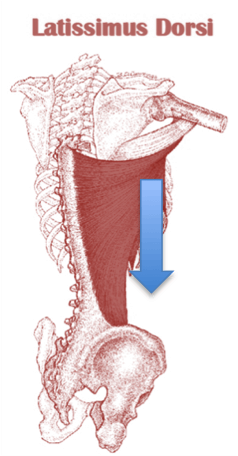You mean Removing an Important Shoulder Muscle Impacts the Shoulder? Who Knew?
The Latissimus Dorsi is a very important shoulder girdle muscle that you may know because it helps give your chin-ups power. The “lat” muscle is also the main muscular connector between your upper body and the lower back which also acts to keep the shoulder ball aligned in the socket. At the same time, the muscle has been used for many years as a “free flap” by surgeons. A free flap is a piece of tissue (usually muscle) with a good blood supply that can be moved to another area without a blood supply or that needs filling. It’s also been assumed that moving the lat muscle for a free flap surgery had little consequences, but a new study has shown otherwise. This is small study of 8 patients who underwent free flap surgery using their lat muscles about 5-10 years earlier (mean of about 7 years). They were then given standardized shoulder questionnaires comparing the operated shoulders to the non-operated side. The side with the free flap surgery had poorer function and range of motion as well as more instability. There was also less strength on the operated side. The upshot? There is no free lunch or “free flap” without consequences. These biomechanical consequences need to be a part of our physician educational system and the importance of them needs to be taught to patients. As a result, our book Orthopedics 2.0 was written to educate patients about how an basic understanding of biomechanics needs to be part of any orthopedic diagnosis.
Learn More About Regenexx® Procedures
We do not sell, or share your information to third party vendors. By submitting the form you agree that you've read and consent to our Privacy Policy.

Chris Centeno, MD is a specialist in regenerative medicine and the new field of Interventional Orthopedics. Centeno pioneered orthopedic stem cell procedures in 2005 and is responsible for a large amount of the published research on stem cell use for orthopedic applications.
View Profile
If you have questions or comments about this blog post, please email us at [email protected]
NOTE: This blog post provides general information to help the reader better understand regenerative medicine, musculoskeletal health, and related subjects. All content provided in this blog, website, or any linked materials, including text, graphics, images, patient profiles, outcomes, and information, are not intended and should not be considered or used as a substitute for medical advice, diagnosis, or treatment. Please always consult with a professional and certified healthcare provider to discuss if a treatment is right for you.
